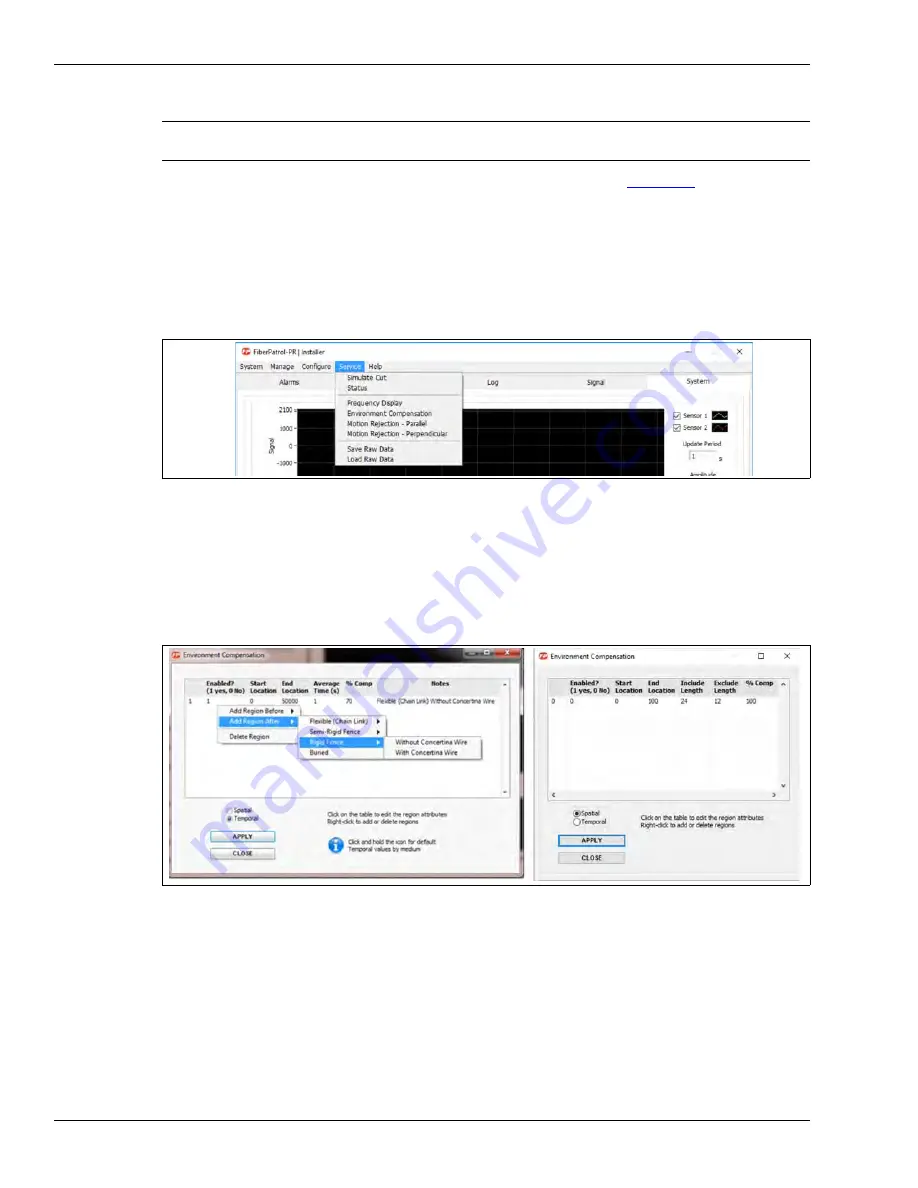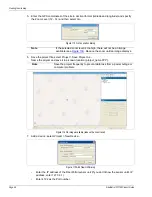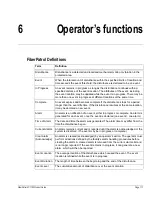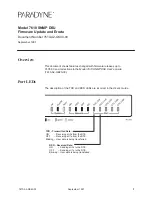
Setting Alarm Detection Parameters
Page 110
FiberPatrol FP1150 Product Guide
6.
Repeat this procedure for each Zone.
7.
Go to the Configuration menu and select Save Configuration (see
8.
On the Configuration menu, select Update the Factory Configuration.
Fine-tuning detection parameters
The FP1150 includes three settings that can be used to fine-tune the sensor’s detection response
to screen out sources of nuisance alarms. Under the Service menu, select Environment
Compensation, Motion Rejection - Parallel, and Motion Rejection - Perpendicular.
Environment Compensation
Environment Compensation can be used to help screen out environmental factors like strong wind
and heavy precipitation that can cause nuisance alarms. Environment Compensation is accessed
through the Service menu. There are two different modes of Environment Compensation, Spatial
and Temporal. Set Temporal Environment Compensation first.
Temporal Compensation:
Temporal Environment Compensation works at a localized point of the sensor and removes
background signals based on the point’s history over a time period defined by the “Average Time”
setting.
•
Enabled? (1 yes, 0 No):
Temporal Environment Compensation is applied to the cable section
if a value of 1 is entered in this column. A value of 0 disables Environment Compensation in
the cable section.
Note
You must select Apply, and then select Replace for the sensitivity
changes to take effect.
Figure 127 Fine-tuning detection
Figure 128 Environment Compensation screens
















































